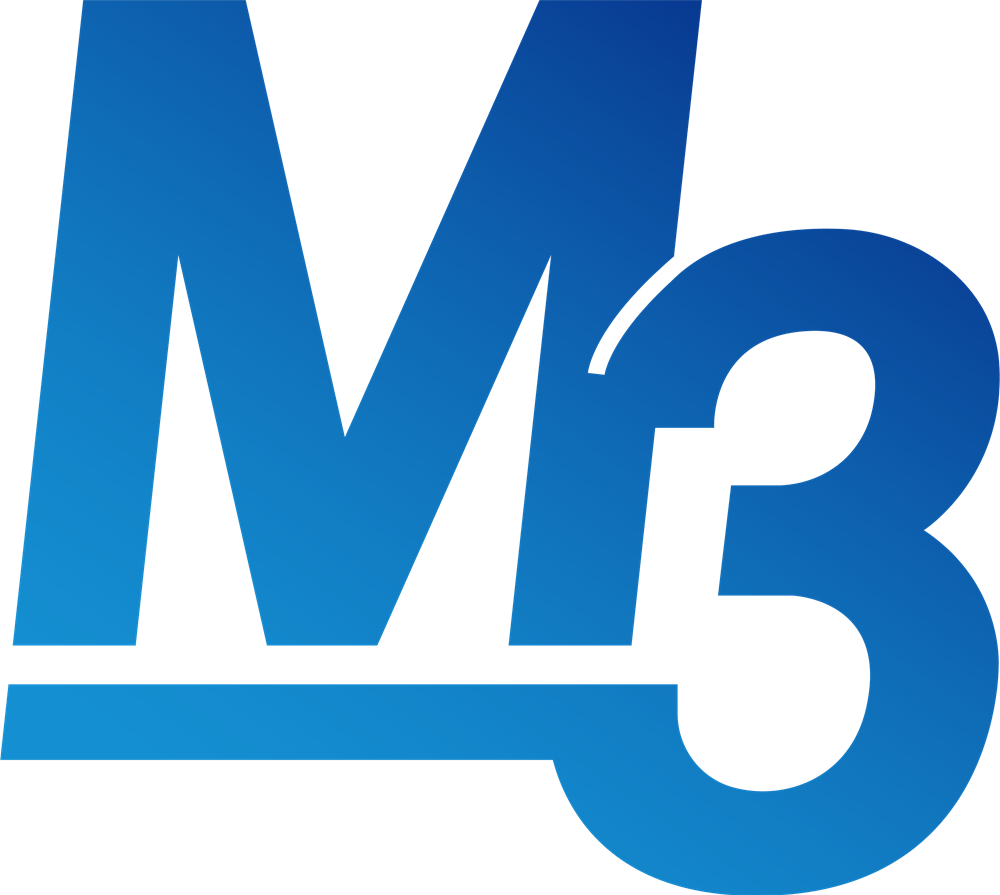Creating accurate and actionable buyer personas is a necessity for any B2B organization seeking to improve its targeting, messaging, and product development. Unlike B2C marketing, which often appeals to individual preferences and lifestyle choices, B2B marketing hinges on professional priorities, industry challenges, and organizational goals. This is where B2B market research becomes invaluable, as it provides the data and insights necessary to create detailed, evidence-based buyer personas that drive meaningful engagement.
This article will look into how businesses and organizations can build better buyer personas by strategically using B2B market research. It will also include methods, tools, data sources, and best practices for turning raw information into usable customer profiles.
Understanding Buyer Personas in the B2B Context
A buyer persona in the B2B space refers to a semi-fictional representation of your ideal customer based on real data and informed assumptions. Unlike in consumer markets, B2B personas often cover a wide range of roles within a company, from decision-makers and influencers to end-users and technical gatekeepers.
Each persona includes information like job titles, responsibilities, goals, challenges, purchasing behaviours, and preferred communication channels. These profiles are not static but should evolve alongside changes in the market, technology, and customer expectations.
Moreover, B2B buyer personas must reflect the complexity of the buying journey. It’s rarely a linear process. Instead, it involves multiple touchpoints, longer sales cycles, and a need for personalized content designed for each stakeholder in the decision-making chain.
Why Is Market Research Important for Persona Development?
B2B market research plays a foundational role in persona development because it offers more than just demographic data. It uncovers behavioural patterns, decision-making processes, pain points, and motivations unique to business buyers. Without research, personas risk being based on guesswork or anecdotal evidence, leading to ineffective marketing strategies.
With an established approach to B2B market research, companies can:
- Identify emerging trends in purchasing behaviour
- Understand the challenges and needs of various industry verticals
- Validate assumptions with real-world data
- Align sales and marketing teams on who the ideal buyer is
- Segment customers based on behavioural, firmographic, and technographic data
- Optimize product development and customer journey mapping
This form of research ensures buyer personas reflect actual market conditions rather than internal biases or outdated perceptions.
Types of B2B Market Research That Inform Buyer Personas
Multiple types of research can contribute to persona development. The most effective strategies combine primary and secondary sources for a full-spectrum view of the target audience.
Primary Research
Primary research involves collecting original data directly from your target market.
- Surveys: These help gather quantitative data about customer preferences, decision-making roles, budget sizes, and more. Designing thoughtful survey questions allows marketers to segment respondents by job title, industry, and key challenges.
- Interviews: One-on-one conversations with existing clients or prospects can reveal insights into their challenges, goals, and the buying process. Unlike surveys, interviews allow for open-ended responses and nuanced storytelling that adds colour to personas.
- Focus Groups: Group discussions allow marketers to explore shared experiences, terminology, and objections among similar customers. This can uncover language patterns and emotional drivers that don’t show up in quantitative research.
- Customer Feedback: Useful data from customer service interactions, onboarding, or post-purchase surveys provides real-time insight into what customers value most and where they encounter friction.
Secondary Research
Secondary research draws from existing data sources.
- Industry Reports: Whitepapers and market analyses from reputable firms (e.g., Gartner, Forrester, McKinsey) provide a high-level overview of trends, competitors, and potential demand shifts. These insights can be used to compare your own audience assumptions against broader patterns.
- Internal CRM Data: Sales records, email open rates, conversion rates, and support tickets offer valuable behavioural data. Analyzing CRM data helps uncover which lead sources and content types produce the most qualified opportunities.
- Social Listening: Monitoring LinkedIn groups, forums, Quora, and review sites like G2 or Capterra can expose unfiltered opinions and commonly used language among buyers. Listening to online discussions helps identify emotional drivers, competitor perceptions, and product gaps.
- Competitor Analysis: Reviewing competitors’ content, case studies, testimonials, and website engagement can highlight shared personas and unmet needs. This is especially useful for new businesses building their first personas.
Segmenting Your B2B Personas Effectively
Unlike B2C personas, which are often segmented by age or lifestyle, B2B segmentation should focus on business-oriented criteria.
Firmographic Segmentation
This includes company size, industry, location, and annual revenue. These factors affect budget cycles, purchasing authority, and technological needs. For example, a small startup with 20 employees has different expectations and constraints than a Fortune 500 enterprise.
Role-Based Segmentation
Within each organization, different people influence the buying decision. Common roles include:
- Economic Buyer: Focused on ROI and cost savings
- Technical Buyer: Prioritizes compatibility, security, and scalability
- End User: Interested in usability, workflow efficiency, and support
- Procurement Officer: Reviews vendor terms, compliance, and price
Mapping out these roles ensures your marketing and sales materials address the distinct concerns of every influencer in the buying group.
Behavioural Segmentation
Tracking how individuals interact with your website, content, and communications helps refine your understanding of intent and interest levels. Behavioural segments might include:
- Repeat visitors vs. first-time visitors
- Content downloaders vs. webinar attendees
- High-engagement email subscribers vs. inactive leads
With intent data, you can adjust messages and offers to match their stage in the buying journey.
Building the Persona: What to Include
A buyer persona goes beyond surface-level information.
1. Background Information
- Job title and department
- Usual responsibilities
- Career trajectory and decision-making authority
- Size of team and reporting structure
2. Responsibilities and Goals
- What are their main goals?
- What KPIs are they measured against?
- How do they define success in their role?
3. Pain Points and Challenges
- What daily frustrations do they experience?
- What strategic threats concern them?
- What slows down their workflow or business growth?
4. Decision-Making Process
- Who else is involved in the decision?
- How do they research vendors or solutions?
- What resources influence their final decision?
5. Preferred Channels and Content Types
- Where do they consume information (LinkedIn, YouTube, trade shows)?
- What formats do they prefer (whitepapers, videos, webinars)?
- Are they receptive to cold outreach?
6. Buying Triggers
- What events prompt them to seek new solutions?
- Are there seasonal or fiscal timelines that affect purchasing?
- Do external pressures like regulations or industry changes influence timing?
Adding a compelling narrative and name to each persona (e.g., “Strategic Sam the CFO”) helps humanize them and encourages empathy within your teams.
Turning Research Into Actionable Personas
A useful buyer persona tells a story that sales and marketing can rally around. Here’s how to turn research into a living, breathing customer profile:
Step 1: Identify Patterns
Look for common, prevailing threads in the data across interviewees or survey responses. Group similar insights to define key characteristics and shared challenges. If possible, avoid letting one or two outliers skew your personas.
Step 2: Create Detailed Profiles
Write a narrative for each persona. Highlight what motivates them, what they struggle with, and how they interact with your company. Include a quick-reference summary at the top with key demographic and firmographic traits.
Step 3: Validate With Stakeholders
Share your draft personas with sales reps, customer success teams, and even customers themselves. Use feedback to refine accuracy and utility. If possible, run A/B tests with messaging based on each persona.
Step 4: Map Content to Personas
Align your content strategy with each persona’s information needs and journey stages. This ensures relevance at every touchpoint. Create content roadmaps that cover awareness, consideration, and decision stages for every profile.
Step 5: Integrate With Marketing Automation
Feed persona data into your CRM and marketing automation systems. Use it to trigger campaigns, score leads, and personalize outreach at scale.
Common Pitfalls in Persona Creation
Avoiding these mistakes can dramatically improve the effectiveness of your buyer personas:
Relying Solely on Internal Opinions
More often than not, basing personas on assumptions from sales or marketing alone can lead to misalignment. Always incorporate direct customer input. A persona built on hunches risks misleading your outreach efforts.
Overgeneralizing
Combining too many roles or industries into a single persona dilutes its usefulness. Create multiple focused personas instead, even if they require additional work. It’s better to have four accurate personas than one generic one.
Letting Personas Go Stale
Markets evolve quickly. Review and update your personas regularly to reflect new insights and changes in buyer behaviour. Set a cadence for quarterly or biannual reviews.
Ignoring the Buying Committee
In B2B, buying decisions are rarely made by one person. Ensure your personas represent the entire decision-making unit. Map how these individuals collaborate and influence one another.
Case in Point:
A mid-sized SaaS company offering cybersecurity solutions encountered stagnant lead conversion rates. Their existing personas were outdated and based primarily on guesswork. By investing in B2B market research, they identified a crucial trend: decision-making shifted from CIOs to cross-functional security teams.
Through interviews and surveys, the company discovered that compliance officers and DevOps managers were now key influencers. As such, they developed new personas with personalized messaging and adjusted their product demos to emphasize integration and audit capabilities.
These changes resulted in:
- A 37% increase in demo requests
- Shortened sales cycles by an average of 12 days
- More qualified leads entering the funnel
This example illustrates the power of research in adjusting marketing and sales efforts to reflect evolving interactions in B2B environments.
Tools to Support B2B Persona Development
Leveraging the right tools can streamline the research and persona-building process.
Survey Platforms
- Typeform: Known for user-friendly surveys and branching logic
- SurveyMonkey: Offers pre-built templates for B2B audiences
- Qualtrics: Ideal for enterprise-level feedback and advanced analytics
CRM and Analytics Tools
- HubSpot: Integrates persona data with marketing automation
- Salesforce: Allows custom fields for persona segmentation
- Google Analytics: Reveals content preferences and behavioural trends
Social Listening and SEO Tools
- BuzzSumo: Tracks high-performing content and influencers
- SEMrush: Provides insights into keywords and competitor positioning
- Brandwatch: Monitors online discussions for real-time sentiment analysis
Persona Design Platforms
- Xtensio: Offers drag-and-drop persona templates
- MakeMyPersona (HubSpot): Free tool with guided creation
- Userforge: Collaborative persona builder for team use
Aligning Personas With Sales and Product Teams
For personas to be truly effective, they must be embraced across the organization.
- Sales Enablement: Equip your sales team with persona-based scripts, objection-handling guides, and tailored pitch decks. Ensure they understand the language and priorities of each profile.
- Product Development: Use personas to prioritize features that address buyer needs. Feedback loops between support teams and product managers are important here.
- Customer Success: Help customer support teams understand the motivations behind user inquiries and requests. Align onboarding and training resources with persona-specific pain points.
Consistent use of personas across all touchpoints ensures a smoother customer experience and reinforces trust in your brand.
The Bottomline
When approached methodically, personas become a strategic asset influencing every part of your business, from lead generation to customer retention. With accurate, research-backed personas, B2B companies can speak directly to the priorities of their buyers, nurture stronger relationships, and produce more meaningful results. The more intimately you understand your audience, the more you can provide solutions that resonate—and convert.
Make Personas a Cornerstone of Your Strategy
Our market research analysts and marketing specialists at M3 Marketing are dedicated to helping B2B organizations create highly detailed, actionable buyer personas that align with real-world market behaviour. We combine deep industry insights with cutting-edge research methodologies to uncover what truly drives your ideal customers.
Collaborate with us to position your brand as the solution they’ve been searching for!

